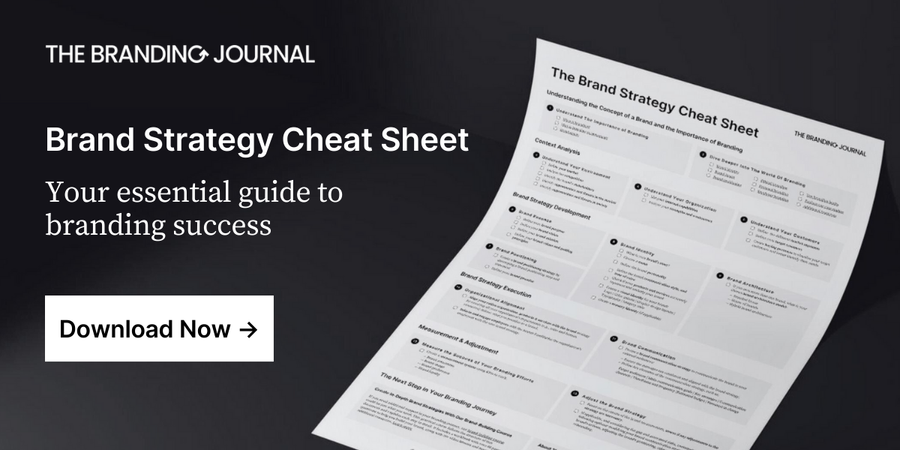In the world of branding, there is a distinct divide between the approaches used to reach consumers and how we reach prospective employees.
Consumer branding is a world of positives: Look at these features and attributes! They bring amazing value and impact! New and improved! Now even better! Looking at any consumer ad or brand positioning is to see a laundry list of positives. In a way, a consumer brand is built via painting: adding more layers of colors and light until the picture becomes clear.
But employer branding is potentially the only kind of branding that takes a very different approach. In a model where success isn’t measured by how many people want to work there (quantity of customers), but by the quality of the final hire, employer branding has to attract and repel in equal measure. It wants to attract only the perfect candidate without anyone else applying. That requires communicating the job’s “downside” as much as it is about talking about what it offers.
This isn’t painting. It’s more like drawing: the process of layering in shadows to create depth and make the picture look real and three-dimensional.
Because unlike all other kinds of branding, employer branding becomes more valuable the more it understands and uses its downsides.
Proven Systems for Business Owners, Marketers, and Agencies
→ Our mini-course helps you audit and refine an existing brand in 15 days, just 15 minutes a day.
→ The Ultimate Brand Building System is your step-by-step blueprint to building and scaling powerful brands from scratch.
Table of Contents
The Limits of Positive Painting in Employer Branding
Let’s start with consumer marketing example trope #103: Candy bars. Marketing candy bars (beyond placement, which probably accounts for 80-90% of sales) is all about feeling good. This one is luscious, this one is crunchy, this one is decadent, this one will make you feel full for a while. Down the gas station candy aisle, it’s nothing but positives as far as the eye can see. No one sells candy bars by talking about their calorie count or nutritional value (because if you did, you’d reposition your candy as a “meal substitute” and place them next to all the other protein bars). You sell candy bars by ignoring anything that might be seen as negative.
Focusing exclusively on the positives doesn’t work for jobs, which are radically different from consumer goods. Jobs are not about momentary feelings of positivity but about how someone might change their life.
This is a job they might expect to hold for years, thus requiring a far deeper level of consideration. It’s all well and good to say how happy accepting the job might feel, but anyone worth hiring will be looking beyond that moment and asking, “what is day 90 like? Or day 365?”
Embracing The Shadows: Building Trust Through Transparency
When someone is considering a job, they need a great deal more information to make an informed choice. Choosing a sub-par candy bar is disappointing for a few moments. But choosing a job where you are not a good fit means weeks, months, and even years of perpetual disappointment, the kind that has adverse financial outcomes that ripple forward in time.
There’s no such thing as a 100% positive job, and anyone worth hiring knows that. But the way most jobs and companies are described on career sites and social media, you’d think you wouldn’t even need to pay people. Every company looks like a land of opportunity, support, and empowerment, changing the world for the better.
But no one really believes that for a second. The exclusive focus on positives clearly shows how the entire picture isn’t being revealed to candidates. Adding in the shadows begins to develop trust with candidates (a value in short supply in most job searches).
Credibility from Depth: Showcasing the Real Employee Experience
So, employer branding must acknowledge the negatives and draw in the shadows to create a complete picture. But the negatives aren’t inherently bad. They give shape and meaning to our lists of positive attributes.
For example, companies love to talk about how innovative they are. But true innovation, the act of inventing the future, implies a level of “we’re making it up as we go.” Anyone who has worked at a truly innovative company knows that there is some amount of chaos that comes with innovation. These things are a package deal. To pretend that a chaotic company can offer work-life balance and a stable environment while inventing the future is laughable.
Reviews that say the company is messy and hard to navigate may seem like problems to solve, but in reality, they are proof points about the kind of innovation you’re offering. Showing the built-in downsides makes the positives more credible.
Strategies for Infusing Authenticity into Your Employer Brand
Every strength comes with a weakness. Every positive comes with its negative. The sunshine causes shadows, so you can’t have one without the other: The shadows prove the sunshine.
Embracing your shadows in your employer brand isn’t easy. There’s so much legacy thinking to overcome. For employer brand owners, this may involve:
- Identify and articulate the downsides: Talking about your downsides isn’t listing issues. It’s about being judicious about what shadows to focus on. A cut-throat culture is a natural outcome of many performance-focused businesses. People complain about slow-moving decision-making processes, but that often comes from a consensus-driven culture where everyone feels involved.
- Integrate the downsides into your messaging: Obviously, you aren’t doing that to be a downer, but acknowledging the downsides in off-hand ways in the middle of longer blocks of positive copy gives enough shadow to be effective.
- Get real: When you involve advocates and staff in the messaging process, help them realize that they aren’t supposed to be cheerleaders. They are here to give an honest perspective about what they’ve seen and done at the company.
It may be strange to think of your negatives as useful tools that can not only stand out in the market but create meaningful credibility with a deeply skeptical audience. We’ve been very well trained to refute, defend against, and obfuscate them, which may be appropriate in many kinds of branding.
Which is why employer branding continues to provide exciting opportunities to test long-held beliefs about what good branding is. Like a laboratory in space where the lack of gravity changes many of the experiments’ outcomes, employer branding rejects many core branding principles (Quality over quantity, advocacy over ads, and now embracing your negatives). It allows us to think about these givens less as received wisdom, but more as mediums with which we can play.




